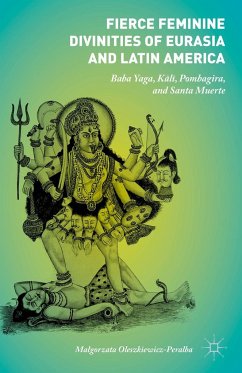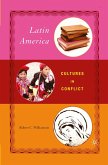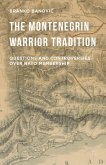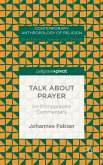In this provocative book, Malgorzata Oleszkiewicz-Peralba examines untamed feminine divinities from around the world. Although distant geographically, these divine figures are surprisingly similar-representing concepts of liminality, outsiderhood, and structural inferiority, embodied in the divine feminine. These strong, independent, unrestrained figures are connected to the periphery and to magical powers, including power over sexuality, transformation, and death. Oleszkiewicz-Peralba offers a study of the origin and worship of four feminine deities across cultures and continents: the Slavic Baba Yaga, the Hindu Kali, the Brazilian Pombagira, and the Mexican Santa Muerte. Although these divinities have often been marginalized through dismissal, demonization, and dulcification, they continue to be extremely attractive, as they empower their devotees confronting them with the ultimate reality of transience and death. Oleszkiewicz-Peralba examines how these sacred icons have been adaptedand transformed across time and place.
"An impressive study that spans and connects continents, cultures, and religions through the elusive trope of the feminine divine. Based on the author's fieldwork in many countries, the book is full of specific details and images as well as critical understanding of each of the figures she describes. It is an invaluable addition to the growing field of goddess studies, but perhaps its special contribution is toward a feminist theology of the subaltern/non-Western world." (Neela Bhattacharya Saxena, Reading Religion, readingreligion.org, November, 2016)
"A scholarly classic in the new paradigm of truth-telling and genuine democracy that includes everybody and their beliefs - from academia to politics!" Lucia Chiavola Birnbaum, Professor Emerita, California Institute of Integral Studies, USA and author of Black Madonnas: Feminism, Religion and Politics in Italy and The Future has an Ancient Heart: Legacy of Caring, Sharing, Healing, and Vision from the Primordial African Mediterranean to Occupy Everywhere
"In what is truly a cross-cultural and transdisciplinary perspective, Oleszkiewicz-Peralba examines four female divinities from all over the globe who personify not only fierceness, but occupy shadow worlds where spiritual power, wildness, sexuality, rage, blood, and death coexist. Lavishly and informatively illustrated (the photo of the Lowrider trunk altar to Santa Muerte is alone worth the price of admission), Oleszkiewicz-Peralba's study of fierce deities combines the rigor of a true scholar with the sass, wit, and charm of Pombagira" - Alan West-Durán, Northeastern University, USA and editor-in-chief of Cuba (two volumes), and author of Afro-Caribbeans and Tropics of History
"In what is truly a cross-cultural and transdisciplinary perspective, Oleszkiewicz-Peralba examines four female divinities from all over the globe who personify not only fierceness, but occupy shadow worlds where spiritual power, wildness, sexuality, rage, blood, and death coexist. Lavishly and informatively illustrated (the photo of the Lowrider trunk altar to Santa Muerte is alone worth the price of admission), Oleszkiewicz-Peralba's study of fierce deities combines the rigor of a true scholar with the sass, wit, and charm of Pombagira" - Alan West-Durán, Northeastern University, USA and editor-in-chief of Cuba (two volumes), and author of Afro-Caribbeans and Tropics of History








